Poland. Latest Gold and Silver Coins Inaugurates New Series Honouring Highest Military Rank
The National Bank of Poland launch a new series of gold and silver collector coins minted in high relief.
Entitled Hetmans of the Polish-Lithuanian Commonwealth, the series will explore and feature some of the most outstanding military figures who attained the highest rank of command second only to the country’s monarch. Comparable to a field marshal or imperial marshal in the Holy Roman Empire, the title of Hetman was first used by the Czechs in Bohemia in the 15th century. It became the title of the second-highest military commander after the king in the Crown of the Kingdom of Poland and the Grand Duchy of Lithuania from the 16th to 18th centuries. The title was automatically given to the leader of the Polish Army and until 1581 it was awarded only for a specific campaign or war. Later it became a permanent title, as did all the noble titles in the Kingdom of Poland and Polish–Lithuanian Commonwealth. From 1585, the Hetman title could not be revoked unless treachery had been proven. Hetmans were not paid any additional monies or recompense for their services by the Royal Treasury.
The first coin in the series focuses on Stanisław Koniecpolski (1591 – 1646) regarded as one of the most outstanding hetmans in the history of Poland. His career was closely interlocked with Grand Hetman of the Crown Stanisław Żółkiewski. It was thanks to his support that Koniecpolski, who at just 26 years of age, was able to take over the office of field hetman in 1618, causing outrage among the nobility. Two years later, Koniecpolski took part in the disastrous venture of Cecora but was captured and held in captivity by the Turks. After his return, he took the command of troops countering Tatar incursions and in 1624, he triumphed over the Tatars in the battle of Martynów. He was then ordered to hold back the advancing Swedish forces in Royal Prussia and despite great difficulty and being outnumbered by the adversary, he fulfilled the task excellently. On the 27th June 1629 at Trzciana, he defeated one of the greatest military commanders of the 17th century, Sweden’s King Gustav II Adolph. In recognition of his leadership and service to the crown, Koniecpolski was awarded the great crown Hetman in 1632. One year later, he defeated the Tatars at Sasowy Róg and the Turks at Kamieniec Podolski whose victory in the latter battle was possible thanks to the hetman’s utilisation of modern warfare methods.
Twelve years later, on 30 January 1644, Koniecpolski won a glorious victory over the Tatars under Ottoman Tuhay Bey’s command in the battle of Ochmatów. At the height of his career and esteem, Stanisław Koniecpolski died suddenly on the 11th March 1646. He continues to be remembered as a courageous and sensible leader, who skilfully combined elements of the old Polish art of war and cavalry raids with the firepower of artillery and infantry. In warfare, he expanded the role of infantry and artillery by utilising field fortifications and also developed arsenals and fortresses. His death was all the more tragic that the period immediately afterwards brought events and disasters that shook the very foundations of the Commonwealth. It is for this reason why many connected the surname of the great commander in chief to the demise of Poland. The name Koniecpolski came to infer ‘the end of Poland’ which many believed was an omen of the state crisis in mid-17th century.
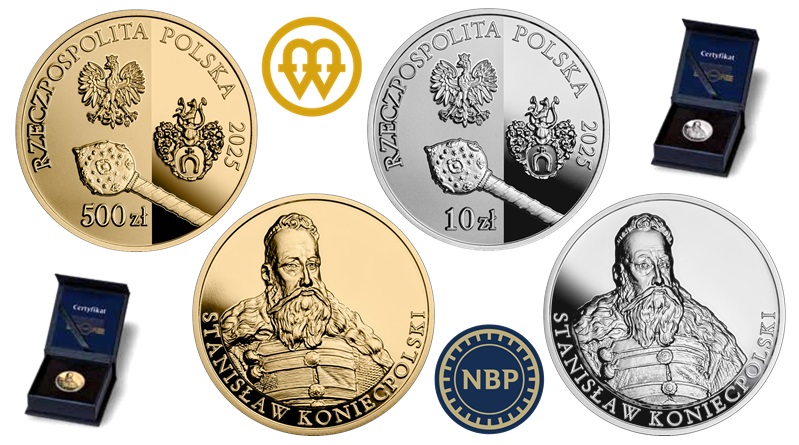
The gold and silver proof coins are produced using a high relief strike by the Mennica Polska – Mint of Poland at their facilities in Warsaw and on behalf of the National Bank. Designed by Dobrochna Surajewska, the obverse side features a front-facing portrait of hetman Stanisław Koniecpolski which is based on an historic engraving. Below and along the lower rim is the text STANISŁAW KONIECPOLSKI. The reverse side includes an image of the crowned eagle which is the official state emblem of Poland along with the depiction of a mace along with the coat of arms from Stanisław Koniecpolski’s own seal. Above the primary design along the rim is the text RZECZPOSPOLITA POLSKA 2025 and below, the denomination 500 ZŁ. (gold) or 10 ZŁ. (silver).
| Denomination | Metal | Weight | Diameter | Quality | Mintage Limit |
| 10 Zlotych | .999 Silver | 31.1 g. | 32 mm. | Proof | 8000 |
| 500 Zlotych | 999.9 Gold | 31.1 g. | 32 mm. | Proof | 1000 |
Available from the 26th March, both the gold and silver proof quality coins are encapsulated and presented in a heavy-gauge lined card case, accompanied with a certificate of authenticity. For additional information on these and other coins issued from the National Bank of Poland, please visit their retail webpage.

Download the Greysheet app for access to pricing, news, events and your subscriptions.
Subscribe Now.
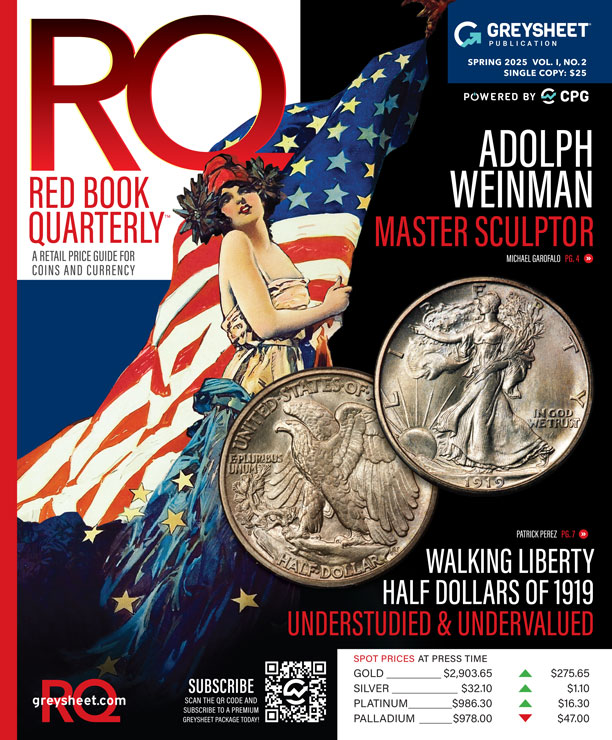
Subscribe to RQ Red Book Quarterly for the industry's most respected pricing and to read more articles just like this.
Author: Michael Alexander
Related Stories (powered by Greysheet News)
View all news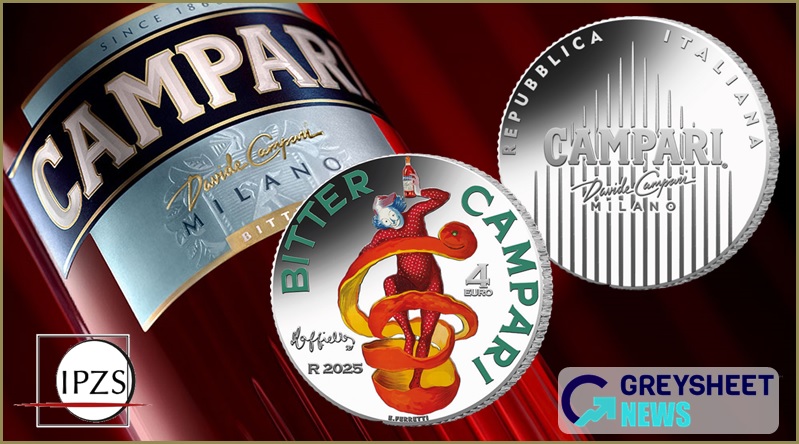
The Istituto Poligrafico e Zecca dello Stato release their latest coins in salute to iconic Italian brands.
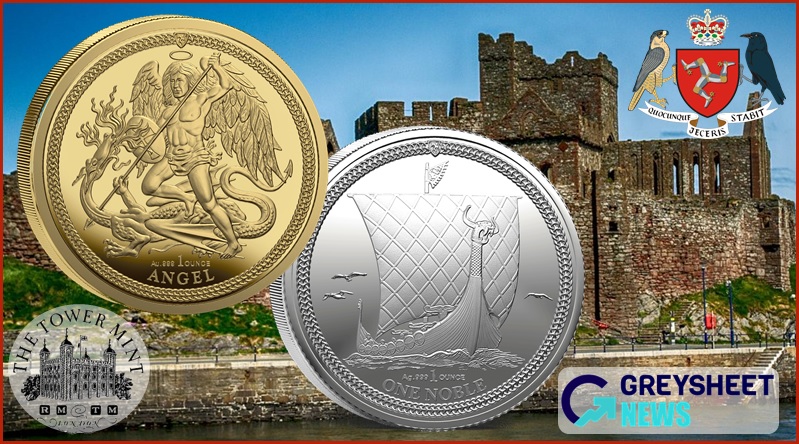
The Government & Treasury of the Isle of Man unveil their annual range of gold and silver collector coins.

The Royal Canadian Mint release new silver proof coins honouring the Calling of an Engineer ceremony.


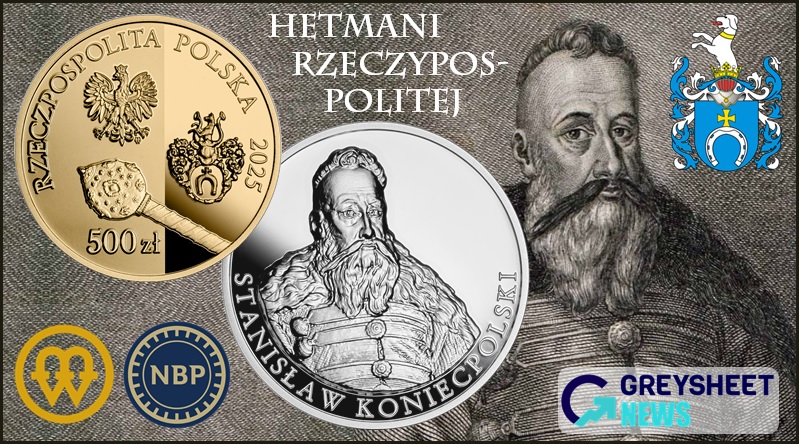






Please sign in or register to leave a comment.
Your identity will be restricted to first name/last initial, or a user ID you create.
Comment
Comments